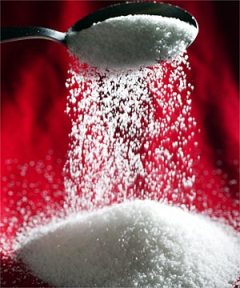 By Emily Fonnesbeck RD, CD, nutritionist for the Biggest Loser Resort.
By Emily Fonnesbeck RD, CD, nutritionist for the Biggest Loser Resort.
The American Heart Association has released new recommendations for added sugar consumption. This is actually the first time a recommendation has been given, and just in time. Sugar intake in this country is at an all time high and the over consumption is being linked with increased risk for obesity, high blood pressure, type 2 diabetes and dyslipidemia (high cholesterol, high triglycerides, low HDL cholesterol and/or high LDL cholesterol).
This is interesting since in the past, fat has been the macronutrient that has been villainized. But looking at the data over the past few decades, intakes of protein and fat have either stayed the same or gone down. So all these extra calories are coming from carbohydrates; not whole grains unfortunately, but refined sugary foods.
The average American consumes about 300-350 extra calories per day in added sugars. This is equivalent to 79 grams or 22 tsp of sugar (1 tsp is equivalent to 4 grams of sugar). The new recommendations are 100 calories, 24 grams or 6 tsp for women and 150 calories, 36 grams or 9 tsp for men. To give you some perspective, one 12-oz can of soda has 33 grams of sugar.
To be clear, this does not include naturally occurring sugars found in dairy products or fruit. These recommendations are for sugars added during processing. So to aid you in cutting back on added sugar, here are some guidelines for packaged foods:
Grains:
- 6 grams or less per serving
- All sugar found in grains is added. There are no naturally occurring sugars found.
Fruit:
- Fruit is natures candy! No added sugar is needed.
- You can’t read sugar on the nutrition facts label for an accurate view of what is added or what is natural. The only way you will be able to tell is to read the ingredient list and make sure there aren’t any added sweeteners (sugar, syrups, honey, nectars).
Dairy:
- Usually added sugars come in flavored milks and yogurts.
- Again, as with fruit, you won’t be able to read sugar on the nutrition facts since some is natural and some may be added.
- Ideally, buy unsweetened milks and yogurts. If you do want sweetened yogurt, make sure total sugar is below 20 grams. For a 6-8 oz portion of yogurt, about 6-12 grams will be natural while the rest is added.
The FDA is working on labeling laws to require sugars to be listed as added or natural. This may take some time to occur so until then, abide by the above guidelines in order to watch your sugar intake. You can also see that there will not be a lot of room for sugary Starbucks drinks, ice cream, treats…they may just not be able to be regular daily occurrences.
I hope you found this helpful in sorting out added vs. natural sugar. I encourage you to take steps in order to cut back on added sugar in your meals. I know that you will not only feel better but you will also notice changes in your health and weight. But maybe more importantly you will start to notice the natural flavors of food. I cannot emphasize enough how distorted our perception is of what food should taste like. Whether it is sugar, salt, saturated fat…we are just eating too much of it.
Sign-up for the Biggest Loser Newsletter, sponsored by the Biggest Loser Resort.
___________________________________________________
Guest Blog Series: Look for the following badge on your favorite health sites to see if they have been a featured guest blogger on DietsInReview.com. See other posts in the Guest Blog series.
If you would like to apply to be featured as a guest blogger, please contact us.

